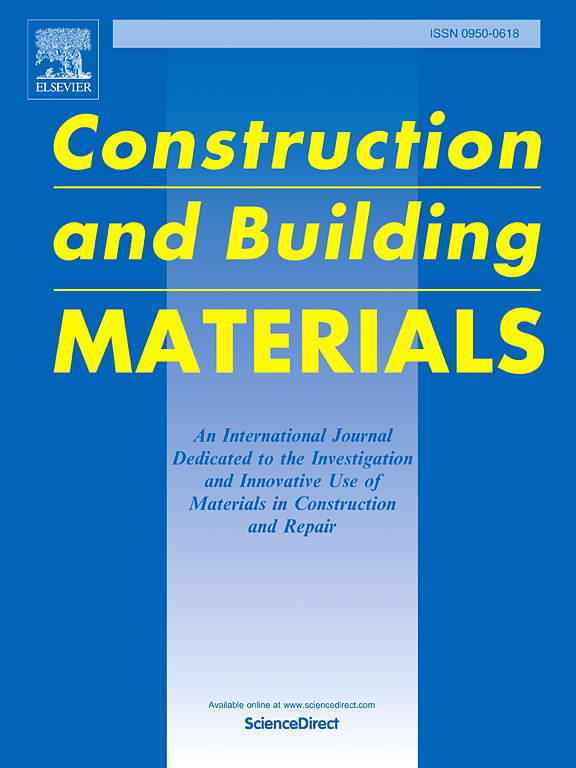Experimental characterization of mechanical properties of Bambusa blumeana bamboo poles and determination of design values
IF 7.4
1区 工程技术
Q1 CONSTRUCTION & BUILDING TECHNOLOGY
引用次数: 0
Abstract
This research examines the geometric, physical and mechanical properties of graded Bambusa blumeana poles in their natural round form. It presents the first systematic large-sample experimental characterization of all mechanical properties described by ISO 22157:2019. By testing over 1262 samples, it derives the mean and 5th percentile characteristic values of the examined mechanical properties. Findings reveal that a significant percentage of the graded population does not meet the minimum requirements of ISO 22156:2021. However, this does not render the species unviable, as evident by its successful use in thousands of bamboo houses in the Philippines. Instead, it highlights the need to ensure the standard is inclusive of a wider range of bamboo species. Furthermore, the coefficient of variations of the examined mechanical properties are similar to that of conventional building material, i.e. timber, highlighting the quality of the grade. The results also indicate that the ISO 12122–1:2014 non-parametric methods (based on AS/NZS 4063.2) return characteristic values that are consistent with other contemporary standards. In contrast, the parametric approaches for deriving characteristic values seem less suited for the examined dataset. Overall, the derived characteristic values are promising for the engineered design of bamboo structures using round Bambusa blumeana poles.
青竹竹竿力学性能的实验表征及设计值的确定
本研究考察了分级青竹杆在自然圆形形态下的几何、物理和力学特性。它提供了ISO 22157:2019所描述的所有机械性能的第一个系统的大样本实验表征。通过对1262个样品的测试,得出了所检测力学性能的平均值和第5百分位特征值。调查结果显示,分级人口中有很大比例不符合ISO 22156:2021的最低要求。然而,这并没有使这个物种无法生存,正如它在菲律宾成千上万的竹屋中成功使用所证明的那样。相反,它强调需要确保该标准包括更广泛的竹子品种。此外,检查的机械性能的变化系数与传统建筑材料(即木材)相似,突出了等级的质量。结果还表明,ISO 12122-1:2014非参数方法(基于AS/NZS 4063.2)返回的特征值与其他当代标准一致。相比之下,用于导出特征值的参数方法似乎不太适合检查的数据集。综上所述,推导出的特征值对圆竹竿竹结构的工程设计具有一定的指导意义。
本文章由计算机程序翻译,如有差异,请以英文原文为准。
求助全文
约1分钟内获得全文
求助全文
来源期刊

Construction and Building Materials
工程技术-材料科学:综合
CiteScore
13.80
自引率
21.60%
发文量
3632
审稿时长
82 days
期刊介绍:
Construction and Building Materials offers an international platform for sharing innovative and original research and development in the realm of construction and building materials, along with their practical applications in new projects and repair practices. The journal publishes a diverse array of pioneering research and application papers, detailing laboratory investigations and, to a limited extent, numerical analyses or reports on full-scale projects. Multi-part papers are discouraged.
Additionally, Construction and Building Materials features comprehensive case studies and insightful review articles that contribute to new insights in the field. Our focus is on papers related to construction materials, excluding those on structural engineering, geotechnics, and unbound highway layers. Covered materials and technologies encompass cement, concrete reinforcement, bricks and mortars, additives, corrosion technology, ceramics, timber, steel, polymers, glass fibers, recycled materials, bamboo, rammed earth, non-conventional building materials, bituminous materials, and applications in railway materials.
 求助内容:
求助内容: 应助结果提醒方式:
应助结果提醒方式:


